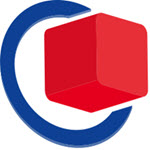
As already leaked by LinkedIn, I recently started a new job at ASTC, as Global Technical Marketing Manager for the VLAB virtual platform product. This is my first major change of job I since I joined Virtutech to work on the Simics simulator back in 2002. It is both a big change and a small change – staying in the world of virtual platforms, but working with a new product that is quite different from Simics. In fact, more things are different and new and fresh than the same…
Continue reading “New Job, New Simulator”






 Show like the Embedded World are full of vendors vying for attention and wanting to get their name onto your mind, desk, or appearance. This is the giveaway game: what can you hand out that will make people get a good and long-lasting impression of your company?
Show like the Embedded World are full of vendors vying for attention and wanting to get their name onto your mind, desk, or appearance. This is the giveaway game: what can you hand out that will make people get a good and long-lasting impression of your company? IEEE Spectrum ran a
IEEE Spectrum ran a